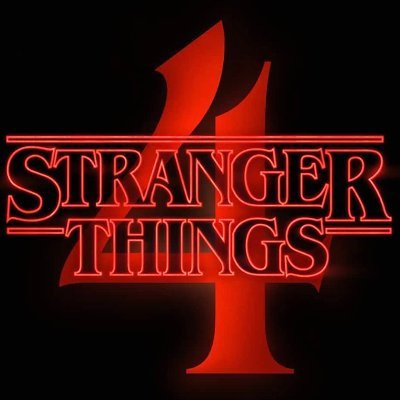Traffic Reports On TV News: The Debate Continues
Also, making the perfect podcast introduction and how to spot "real" journalism
NOTE: We’ve changed our publication day from Monday to Tuesday, after reading a study that shows that Tuesday between 10 am and 2 pm is the primary time to send out a newsletter.
This week, we look at a chart that purports to show how to spot “real” journalism and how to create a great intro for a podcast. First up - we continue a debate about traffic reports on TV.
IMAGE: User B137, Creative Commons 4.0 License
THE LEDE:
THE DEBATE OVER BROADCAST TV TRAFFIC: I love it when I hear from the readers, especially those that challenge what I’ve written. Last week, I made a somewhat modest proposal that we do away with traffic reports on broadcast news. The gist was that we have apps that do the job better when you’re on the road. An accident report at 6:10am may mean nothing by the time you drive to that point, say, a half-hour later. Onboard GPS and apps like Google Traffic and Waze have disrupted traffic reporting.
You responded. One of you pointed out, rightly, that morning traffic is a big money-maker. Sponsorships for this element sell well, and we’re not at a time where we can leave money on the table.
Another Remote Notes subscriber and longtime newsie had a different point: the audience, according to his research, expects traffic reports during TV news:
You are probably right about the normal everyday “traffic is bad here at rush-hour” (reports) but recent research I just pulled out of the field shows the audience answering otherwise, especially when the unusual happens or there’s (bad) weather. I’m not sure a blanket “don’t do traffic" is wise.
I have to say - I agree. There are occasions when traffic is news. Typical traffic is not news. But an emergency road closure that means someone may be an hour late getting home is news.
So, I amend last week’s entry to say this: The definition of news is something out of the ordinary. Let’s treat traffic as news. Report incidents that are out of the usual, but we don’t need the constant “Route 10 is clear, the Downtown Loop is wide open, The Pike is stop-and-go, No problems on Route 95 south,” reports on repeat.
ADVERTISEMENT
NEWS AND NOTES
“STRANGER THINGS” IS NUMBER ONE IN STREAMING: “The Upside Down” is tops in streaming, according to Nielsen. “Stranger Things,” now in its fourth season, streamed the most minutes during the week ending July 3, the latest information Nielsen has published publicly. Netflix held seven of the top ten streamers that week, with “Umbrella Academy” in second and “Sing 2” coming in third.
SOCIAL MEDIA USERS LOSING PINTEREST: Pinterest, like most major social media companies, saw a drop in revenue in the second quarter of 2022. The picture-based platform reported losing five percent of its active monthly users, year over year. It also missed its earnings estimate, and reported to investors it expects a weak third quarter. We’re coming out of Covid, and people are spending less time on social media.
GMAIL GETS A NEW LOOK, FUNCTIONS: If you have a Gmail account, you may have noticed the web interface has a new look:

Using Quick Settings, you can select apps you’d like to toggle between on the left side of your window, whether it’s Gmail by itself or a combination of Gmail, Chat, Spaces and Meet. Label lovers will see separate sections for system labels (like Starred, Snoozed and Important) and custom labels you make yourself. And people who love to chat will see conversation bubbles with snippets of incoming messages, along with options to quick reply instead of opening the full message.
If you don’t see it now, just wait. Gmail will be rolling this out over the next few weeks to all its users. And if you hate it, you can always switch back to the old look:
At the top right, click Settings
Under “Quick settings,” click Go back to the original Gmail view.
In the new window, click Reload.
Overall, I think the new Gmail is a significant improvement to a product many of us use and enjoy. They’ve kept the familiar look, and added much-needed functionality.
THE MESS THAT WAS THE REPORTING OF TONY DOW’S DEATH: Tony Dow died last week, but the reporting around his death was problematic. The star known as “Wally” on “Leave it to Beaver” passed away from cancer, but the reports of his death, as the saying goes, were premature. It appears Dow’s wife told his management Dow had died, leading to the report. However, a short time later, his daughter-in-law rescinded the report.
Confused? So was The Washington Post, which confirmed the original story with Dow’s management and ran with it.
Tony Dow died a day later, amid all the confusion, prompting a whole new round of obituaries that embarrassingly had to note that the story was a correction. I think we have to give The Post a pass on this one. It went through proper channels. Dow’s management confirmed the story from his wife, and that’s typically enough information in celebrity deaths. He was known to be terminally ill. If I were the editor, I would have signed off on publication of the story. Why Tony Dow’s wife thought he was dead when he wasn’t remains an unanswered question, although his management notes that she was “very distraught.”
Tony Dow (Image: Wikipedia, Public Domain)
LINKS AND LIKES
CREATING A PERFECT PODCAST INTRODUCTION: Did you know that about 25-30% of the podcast audience drops off in the first five minutes? A good introduction can make the difference. Buzzsprout, the podcast hosting company, has a very good blog with lots of tips for podcasters. I won’t list them all here, but a killer introduction comes down to:
Good introductory music (sounds more professional)
Strong host introduction and tagline
Brief overview of the episode
Clearly stated benefit to listeners
(Optional) Call to action
There’s a lot of good information in each category. Here’s their video, which is well worth watching if you’re a podcaster:
LISTENING/READING: Remote Notes reader Jodi Decker’s grandmother spent six and a half years in an asylum starting in the 1920s. Martha Nasch, never committed a crime, and was only held because she wasn’t eating or drinking (likely due to a depressive episode). Decker collaborated on the book “Poems From The Asylum,” with entries by Martha Nasch written during her time at Minnesota’s St. Peter Hospital for the Insane. Decker and writer Janelle Maloney appear on “That’s Some Crazy Sh*t,” a podcast dedicated to the unusual, for a lively discussion about this wild tale. Hint: The husband did it. (Apple, Spotify)
SPOTTING “REAL” JOURNALISM: The Atlanta-Journal Constitution posted a graphic I found interesting and worthy of discussion. It’s a tree that purports to show “How to Spot Real Journalism.”
I’m interested to hear what you think. Some of these items are easier to quantify than others. Items like “Multiple Credible Sources,” “Documentation,” and “Context” should be easy to find in an article. Others are less tangible. “Balance” and “Fairness” are often in the eye of the beholder. You and I can read a story and disagree on whether there was an “Avoidance of Bias.” I think this is a good tree, but it’s also a challenge to make a definitive guide upon which everyone can agree.
CONGRATULATING: Big congratulations to friend of Remote Notes, Dan Patterson, on his new job as Editorial Director at Cybergill. Dan was most recently the tech reporter for CBS News and senior producer at CNET. Cybergill is a threat intelligence firm, and we’re sure Dan’s going to do a great job with their editorial work surrounding the deep web and the dark web. Check out his Substack newsletter here.
HOUSEKEEPING:
WRITERS WELCOME: If you’d like to contribute an entry to Remote Notes, we’d love to have you onboard. It would be great to have more writers onboard. If you think you have something to contribute, even occasionally, let me know.
ADVERTISING: We’re running a promotion, and this is the last week: Sponsor Remote Notes for $25 for four weeks. That’s a savings of $75. You’ll be seen by lots of folks in the media business. For more information, hit the “Email Me” button below. Thanks to iPublish Media for its sponsorship.
PREMIUM SUBSCRIPTION: Want to be a pioneer? Want to get in on the ground floor of something big? Become a paid subscriber to Remote Notes for just $5 a month or $30 a year. You’ll get bonuses like: extra newsletters; access to the archives; texting with me; a free consult for your business and much more to come. Please support independent media.
-30-










